Small unmanned aerial vehicle "Tachyon"
The Scientific and Production Association "Izhmash - Unmanned Systems" has been counting its work since 2006. One of the directions of the company's work immediately became the development, production, repair, maintenance, sale and installation of unmanned aerial vehicles. Currently, the company is working on expanding the tactical and technical capabilities of its products and developing new unmanned aerial systems. It is worth noting that in recent years Izhevsk has become a landmark city for Russian unmanned systems. Today, three serious companies are working in the capital of Udmurtia at once, which are developing drones. These are the already designated research and production association Izhmash - Unmanned Systems, the Zala aero company, 51% of which is owned by the Kalashnikov arms concern, and Finiko LLC, also known as the Unmanned Systems group of companies.
At the same time, drones can become a new brand of Udmurtia. The acting head of the permanent mission of the republic under the President of Russia Mikhail Khomich spoke about this in the framework of the Eastern Economic Forum in September 2017. According to him, for many governors it has become news leadership of Udmurtia in the creation and production of UAVs. Today they find their consumers not only in the military, but also in the civil sphere and are widely represented on the Russian market.
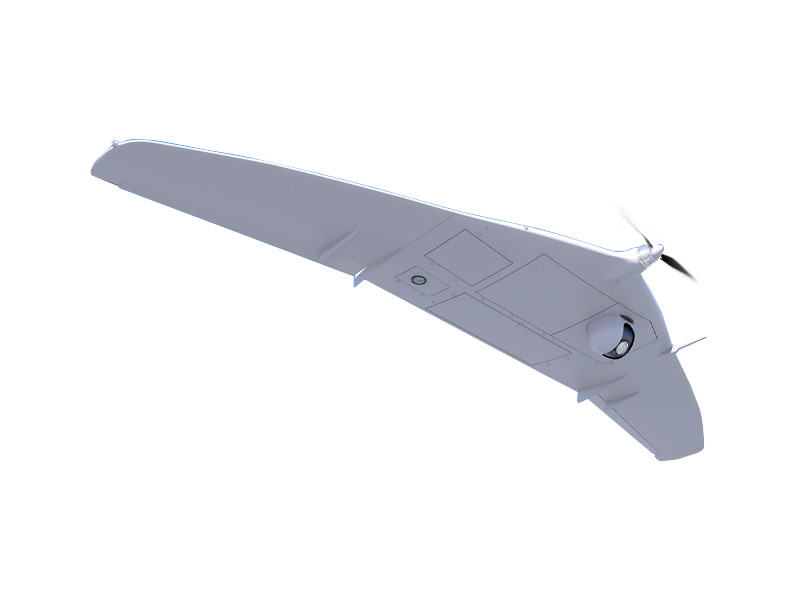
The development and design of the Tachyon unmanned aerial vehicle began at the end of the 2000s, this device was presented to the general public in the 2012 year. At the end of 2014, the drones began to enter into service with the UAV units of the Eastern Military District. Despite the fact that this aircraft was originally developed and intended for use exclusively in the military sphere, its flight-technical and operational characteristics provide the UAV with a high potential. This model is in demand, so the drone is quite actively produced in the framework of the state defense order. In the future, this unmanned aerial vehicle can also be focused on exports to the armies of other countries.
In January 2015, state tests of a new modification began in Russia. drone, which did not work from batteries, but from fuel cells. In the same year, news began to appear about the supply of these drones to the troops, in particular, at the beginning of 2015 they entered service with the intelligence units of the Central Military District (CVO), and in 2016 they entered service with the Russian military base in Armenia. Quite recently, information appeared in the Russian press about the creation of a flotilla new special forces. A detachment of "coastal commandos" is created on the basis of a detachment of anti-sabotage forces and assets (PDSS) of the Caspian flotilla. It is reported that, in addition to other things, the Tachyon drones will go into service with this unit. They will help special forces soldiers with secretive landing of reconnaissance groups ashore, as well as in the detection of enemy saboteurs, including under water.
So the fighters of the special units of the Northern Fleet in 2015 were experiencing Tachyons in bays on the coast of the Kola Peninsula. First of all, they were interested in the possibility of using the drone to detect combat swimmers and their means of delivery at various depths, as well as detecting mobile bases of saboteurs, secrets and disguised ambushes, including at night using special surveillance systems. The possibilities of detecting small and ultra-small objects on the shore, on the water surface and under water were tested.
Small unmanned aerial vehicle "Tachyon" developed by the aerodynamic configuration of the "flying wing". This scheme is a type of tailless design with a reduced fuselage, the role of which is played by the wing, which carries all the units and the payload. One of the brightest representatives of the aircraft, built on the "flying wing" is the American strategic bomber B2 Spirit. The Tachyon UAV consists of an airframe with an automatic autopilot control system, a power plant, controls, an onboard power supply system, as well as a parachute landing system and removable target load units, which can vary depending on the tasks solved by the drone. The drone is launched using a rubber catapult, landing - parachute method.
Unmanned aerial vehicle "Tachyon" was specially designed for use in harsh climatic conditions, it can be equipped with a video camera, a thermal imager and other equipment. The device has a small weight and size characteristics and can be used in a wide range of temperatures and altitudes, as well as with a significant wind speed. The starting weight of the drone does not exceed 25 kg, with a payload mass - 5 kg. These small drones can be used in the interests of military intelligence in the daytime and nighttime at a distance of up to 40 kilometers, even in adverse weather conditions, operation is permitted with gusts of wind up to 15 m / s. The Tachyon UAV is able to conduct reconnaissance on a time scale close to real, and can also be used for organizing video and intercom communications, acting as signal transponders.
The small unmanned aerial vehicle "Tachyon" has a fairly compact design, its length does not exceed 61 cm, and the wingspan is two meters. Despite its small size, due to its special aerodynamic shape, it is characterized by high maneuverability and stability in flight. A single electric motor is used as a power plant, which allows the multifunctional device to reach speeds of up to 120 km / h. The maximum duration of the apparatus in the air is limited to two hours. On the Takhion unmanned aerial vehicles equipped with electric motors operating on fuel cells, the energy for flight is generated by an electromechanical generator of electricity. Such an unmanned aerial vehicle uses compressed hydrogen as a fuel, and atmospheric air as an oxidizer.
The composition of the unmanned complex: two unmanned aerial vehicles "Tachyon", a set of interchangeable payload modules (camera, camera, infrared camera, thermal imager), ground control station and a catapult. The calculation of the complex consists of two people on the ground. Both work with computers. One of them controls the unmanned vehicle, and the screen of the other displays information coming from the drone.
Flight performance of the Tachyon UAV:
Length - 610 mm.
Wingspan - 2000 mm.
Take-off weight - 25 kg.
Weight payload - 5 kg.
The engine is electric.
Flight speed: maximum - 120 km / h, cruising - 65 km / h.
Flight duration - 2 hours.
The range is 40 km.
Maximum flight height - 4000 m.
Operating temperature range: -30 to + 40 ° C.
The use of a drone "Tachyon" during exercises at the general range in Molkino under the Hot Key, January 2016, photo: kuban-spotting.livejournal.com
Information sources:
http://pro-samolet.ru/blog-pro-samolet/1210-trenirovochnye-polety-bespilotnika-tahion
http://avia.pro/blog/tahion-tehnicheskie-harakteristiki-foto
http://bastion-opk.ru/tahion-bla
Open source materials
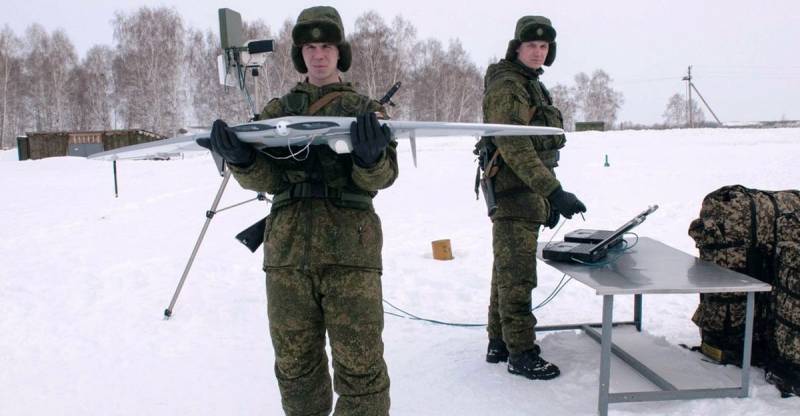
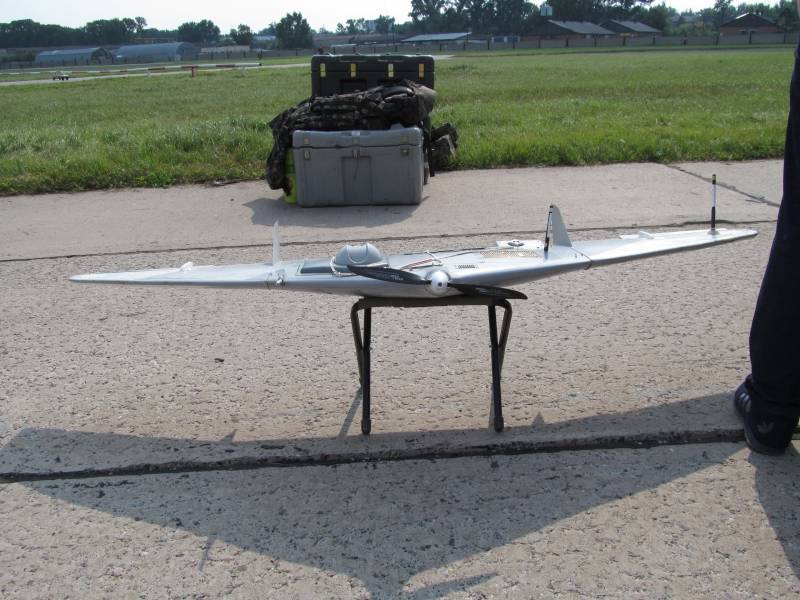
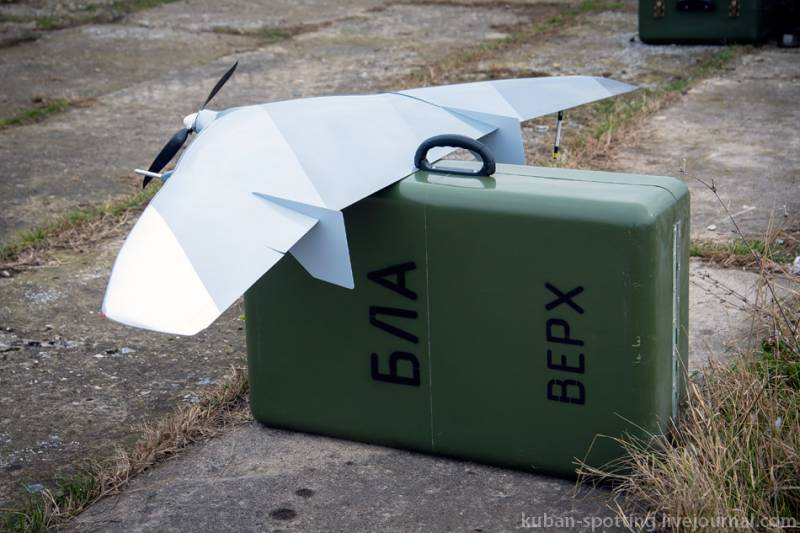
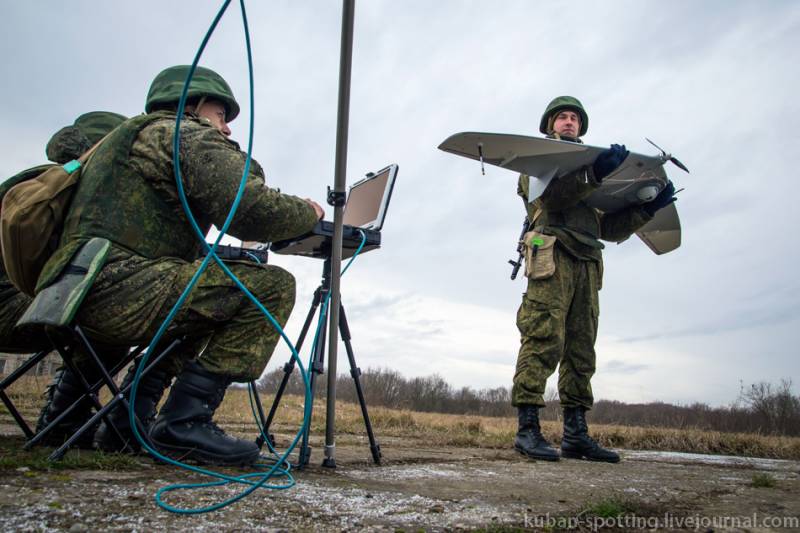
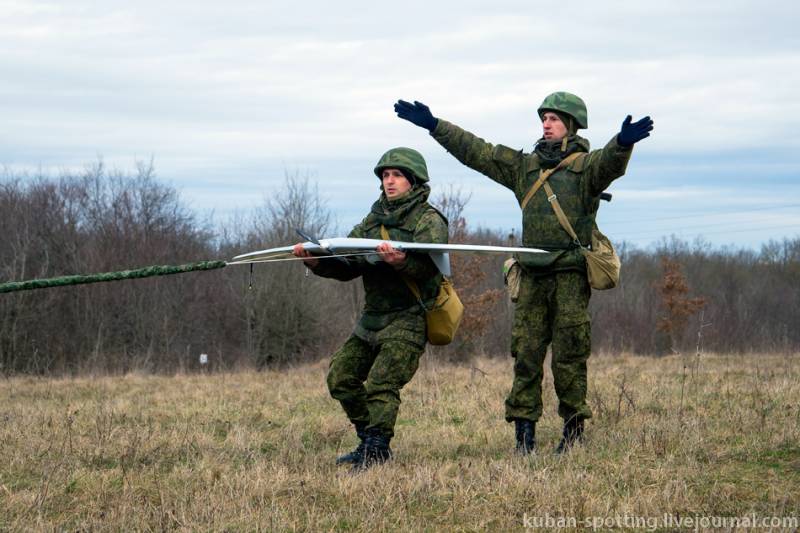
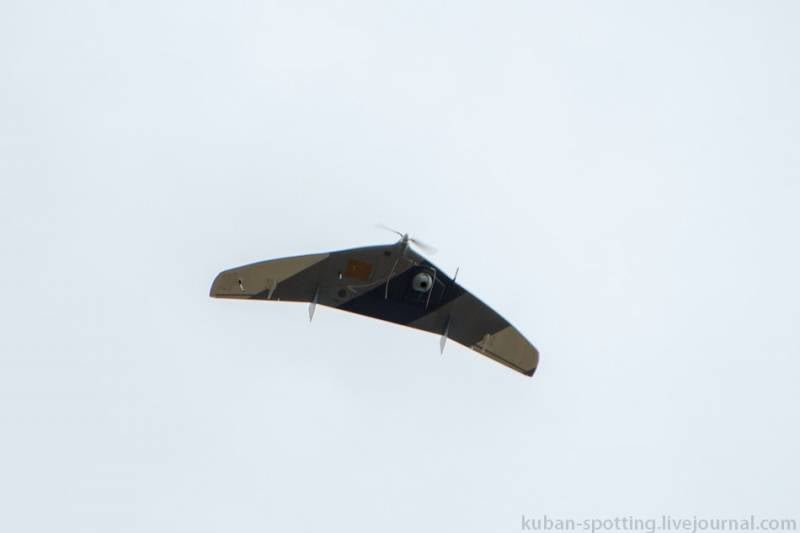
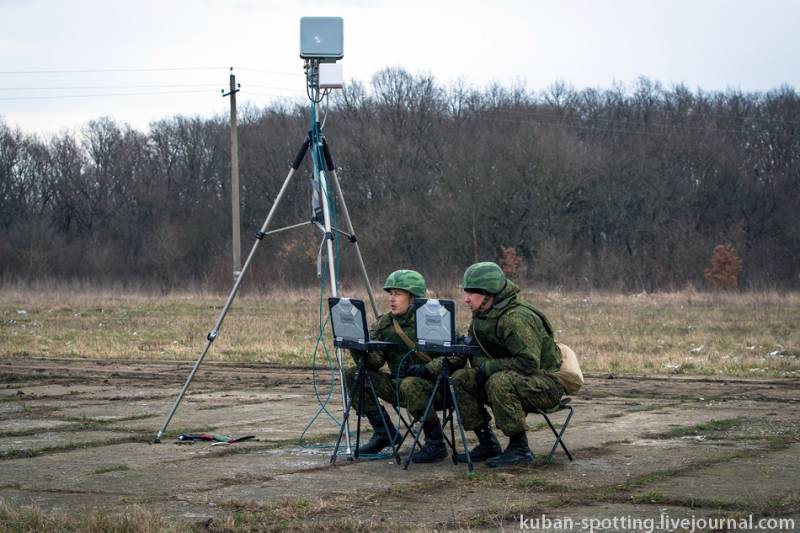
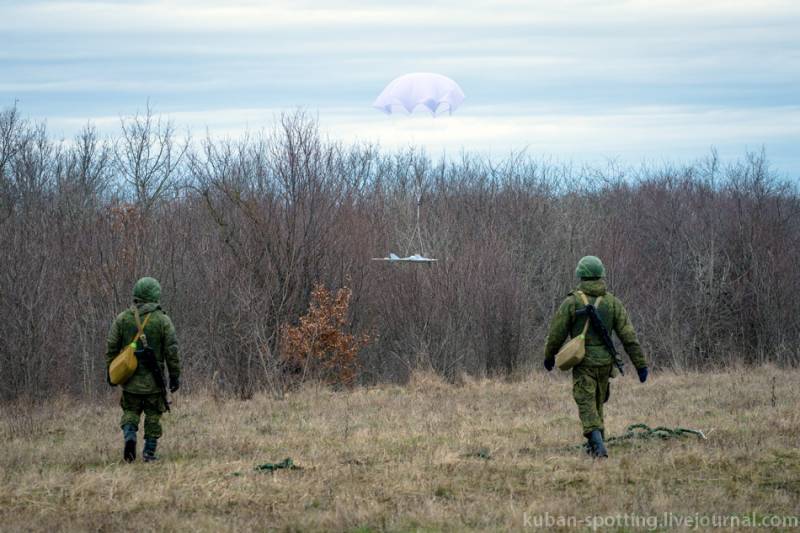
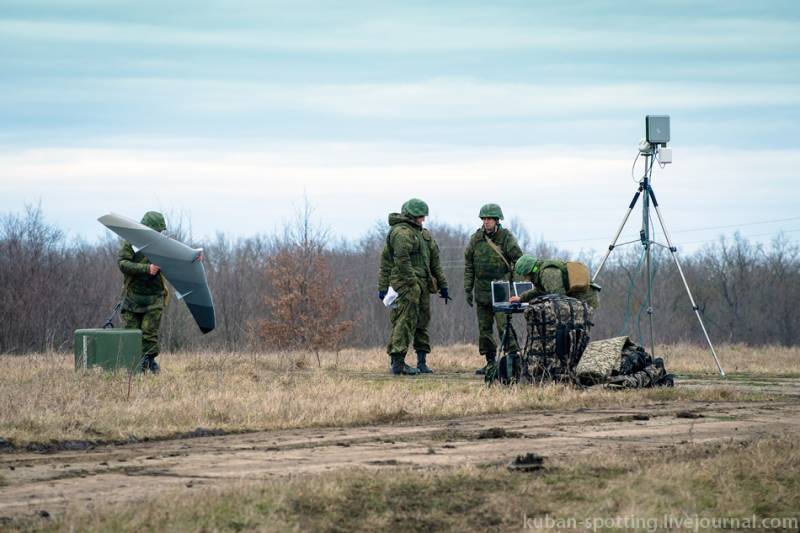
Information